Also, I have no idea if this is standard in Japan, but the bread slices were mega thick and freakin’ huge. Maybe because sliced bread is a “Western Thing,” the Japanese feel that they need to make it cartoonishly humongous.
Or maybe they just want you to buy loaves way more often.
Who can tell?!
To round out breakfast, we indulged in a spot of tea, accompanied by a gourmet Japanese cake paired with exotic peanut-butter crisps.
Of course, by “gourmet” I mean purchased from an ordinary Japanese supermarket, and by “exotic” I mean brought from the Portland Trader Joe’s in Hisachan’s carry-on bag (at Naoko-San’s special request)… But why dwell upon details?
For to eat a foreign dish is to conduct a pilgrimage of the palate; and foreignness renders all things extraordinary. But nothing takes you places quite the way food does.
Here we see Naoko-San and Koji-San posing with the Royal Albert teacup set I brought as an omiyage, or souvenir.
But then… NEKO ATTACK!
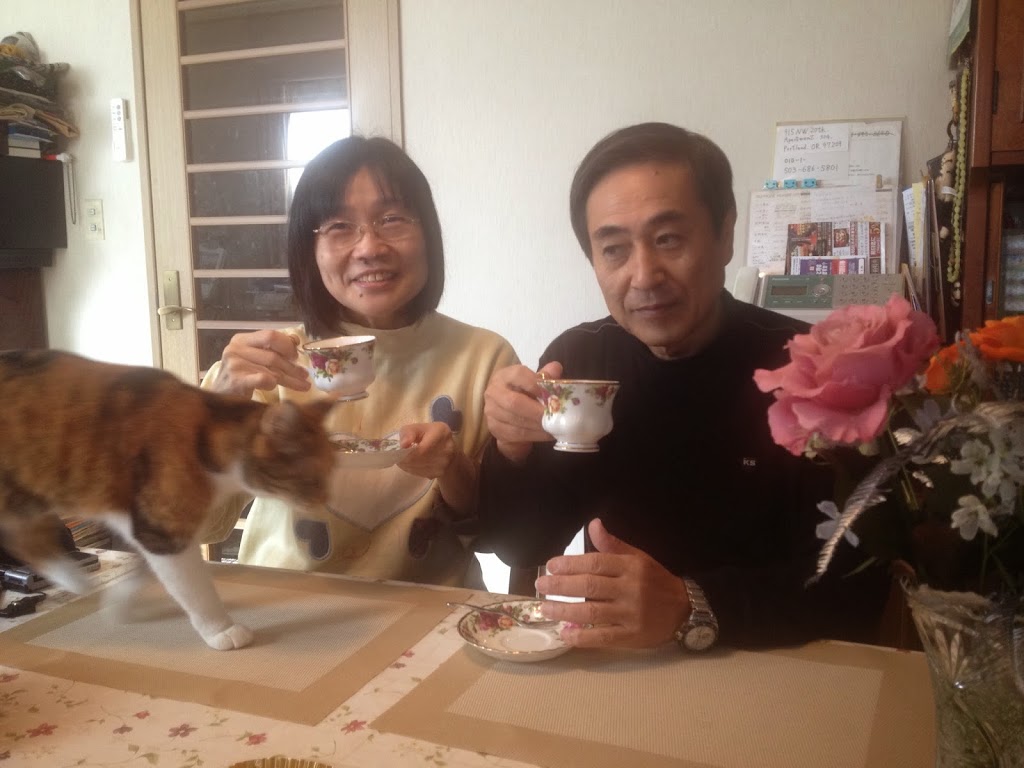 | |
| (Probably on a mission to destroy more of the flowers I bought. Dammit.) |
Hisachan and I would be visiting Gokoku Jinja, one of the most popular Shrines in Hiroshima, located on the old castle grounds downtown. We walked to the entry way, donned our shoes, and began our sojourn.
Unlike in the States, where the majority of our streets are named after slave-owning, genocidal, white dudes, some of the major avenues in post-senselessly-apocalyptified Hiroshima feature names evocative of the highest potential of human achievement.
We found the Promenade of Culture, and the Promenade of Peace during our perambulations.
 |
| Rad. |
I decided to try a Japanese power bar, er, thing. It was a lot like most American power bars—very chalky, vaguely chocolatey, and probably not half as good for me as the package would have me believe. But being small and Japanese, it still felt special.
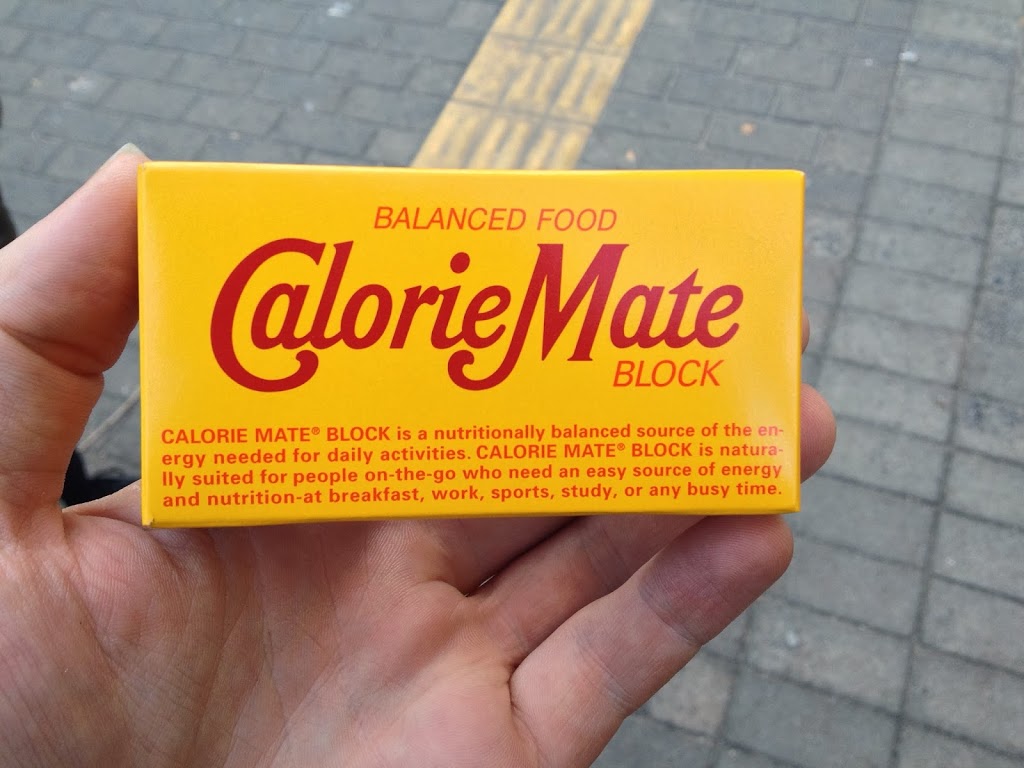 |
| (So does this mean it mates with calories or blocks them?) |
The peanut butter sandwich that I purchased from a conbeenee felt special, too.
Not that I’m much of a connoisseur of convenience store sandwiches, but this thing was basically junk food. I haven’t eaten American junk food in years, so I’m probably not the best judge of its comparative quality. But because the wrapper said “pii-na-tsu” (“peanuts”) in katakana, it seemed much better than it probably was in reality.
Along the way we even found a Christian church! Holy Jeebus!
I wonder if they participate in that cannibalistic wafer thing? If so, what kind of wafers do they use in Japan?
Between the fluffy blue sky, creamy stones, and crisp wood trim, the ramparts of Hiroshima Castle looked delectable, albeit indigestible. Though the Shrine for which we were bound stood very near to it, we would not be visiting the rebuilt keep of Hiroshima-Jo until the following day.
As we crossed the bridge which extends over the old castle moat, I found myself imagining the days when samurai, monks, and merchants traversed its length.
Within the castle grounds, we found walkways lined with food-stalls. Such places were ubiquitous during my visit in Japan, though I figured this was only due to the festivities of the New Year.
Yet were these little eateries extensions of local restaurants, or were they independent? And if so, what did they do during the rest of the year?
With these questions burning in mind, I did what most Americans would do—I got up a fierce hankering to ask someone about it. However, my Japanese was not up to the task, so I instead implored The Princess to investigate the matter on my behalf by asking one of the tent-dwelling food-slingers nearby.
“We don’t ask,” she replied.
This is true. If you ever find yourself taking a test on what to say to strangers in Japan, the answer is ‘None of the above.’
“Aw come on,” I pleaded, “just blame it on your American boyfriend.”
“We don’t blame,” she added.
This is also true. If you ever find yourself taking a test on acceptable excuses to use in Japan, the answer is still ‘None of the above.’
“Do you really think they’d mind that much?”
Somewhat reluctantly, Hisachan wandered over to a stall, and exchanged some phrases with one of the cooks. As it turns out, the folks who run these food-stalls come from all over, and actually make their livings by attending various festivals, often with their whole families working together. Since Japan boasts an immensity of national and local festivals occurring in each season, these Fair-Chasers, as I came to call them, are able to stay busy throughout the year, visiting every part of Japan in the process.
Nothing takes you places quite the way food does—right???
We pressed on past the tents, and soon found ourselves at Gokoku Shrine… But that must await our next entry.


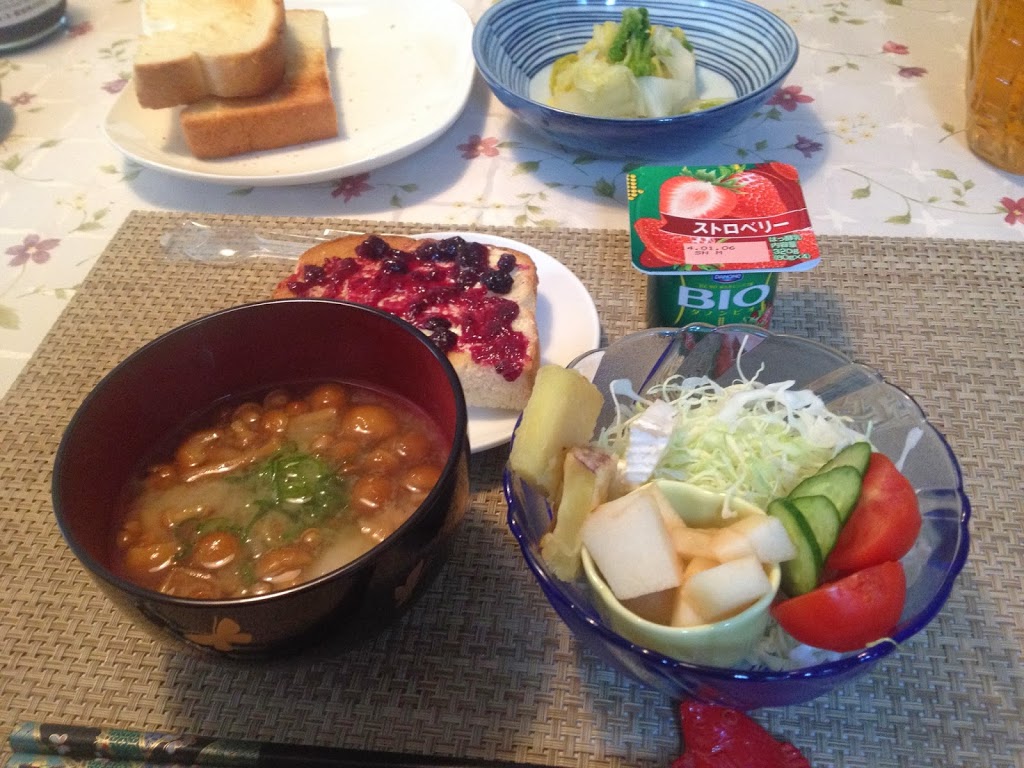
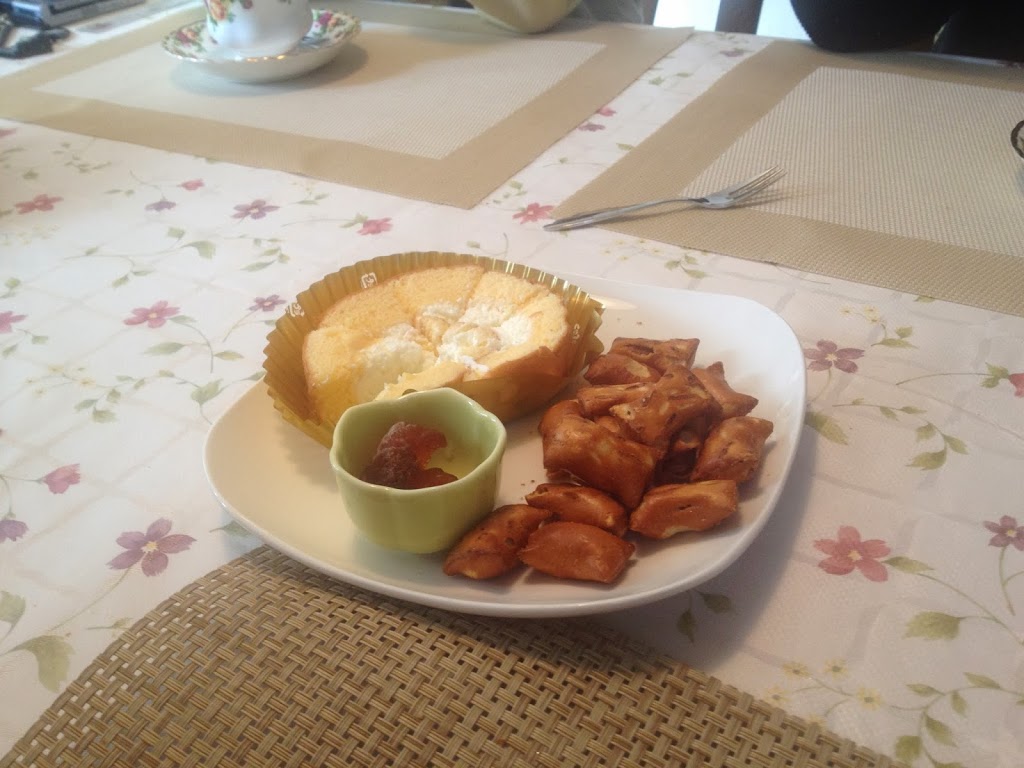

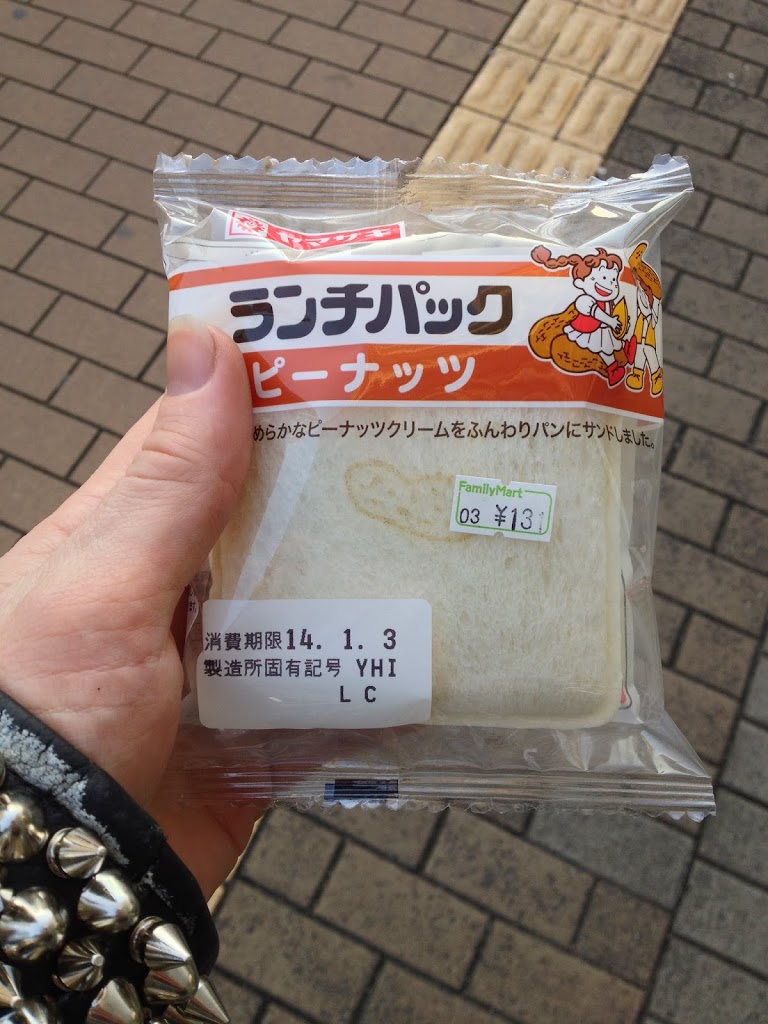
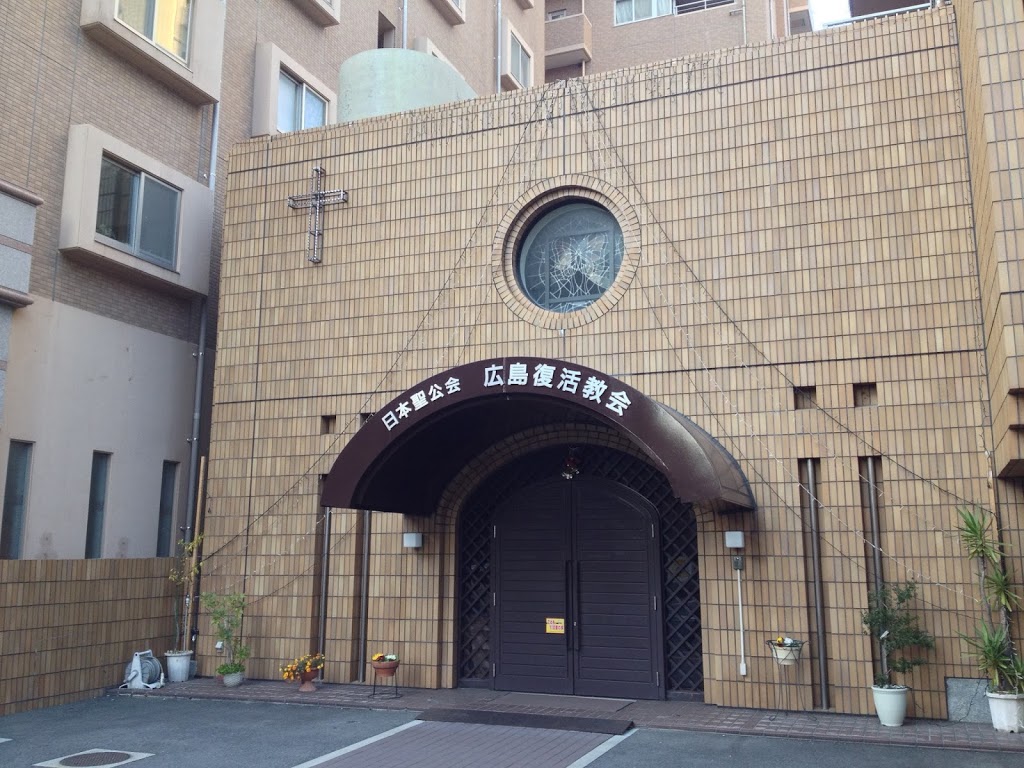
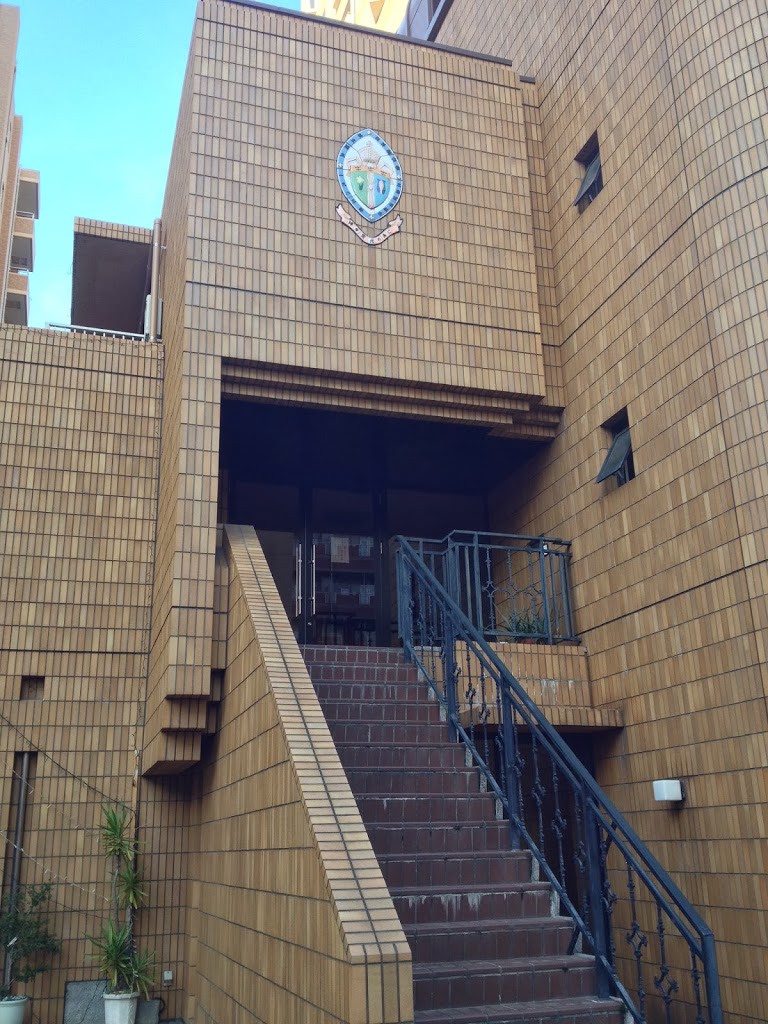
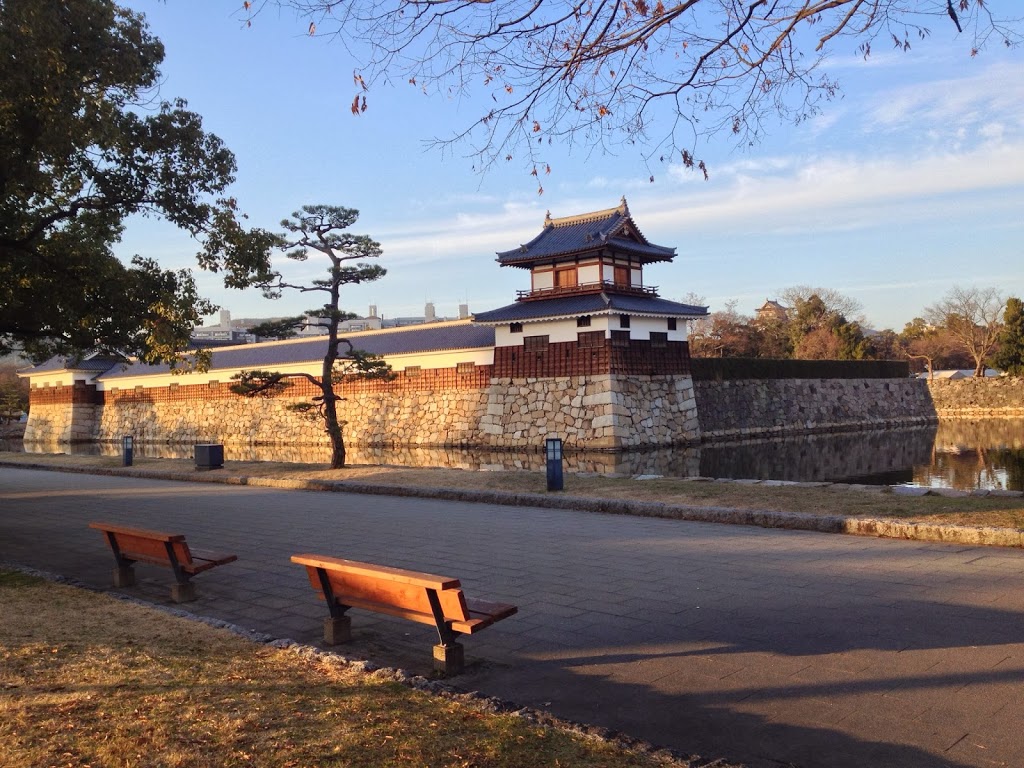
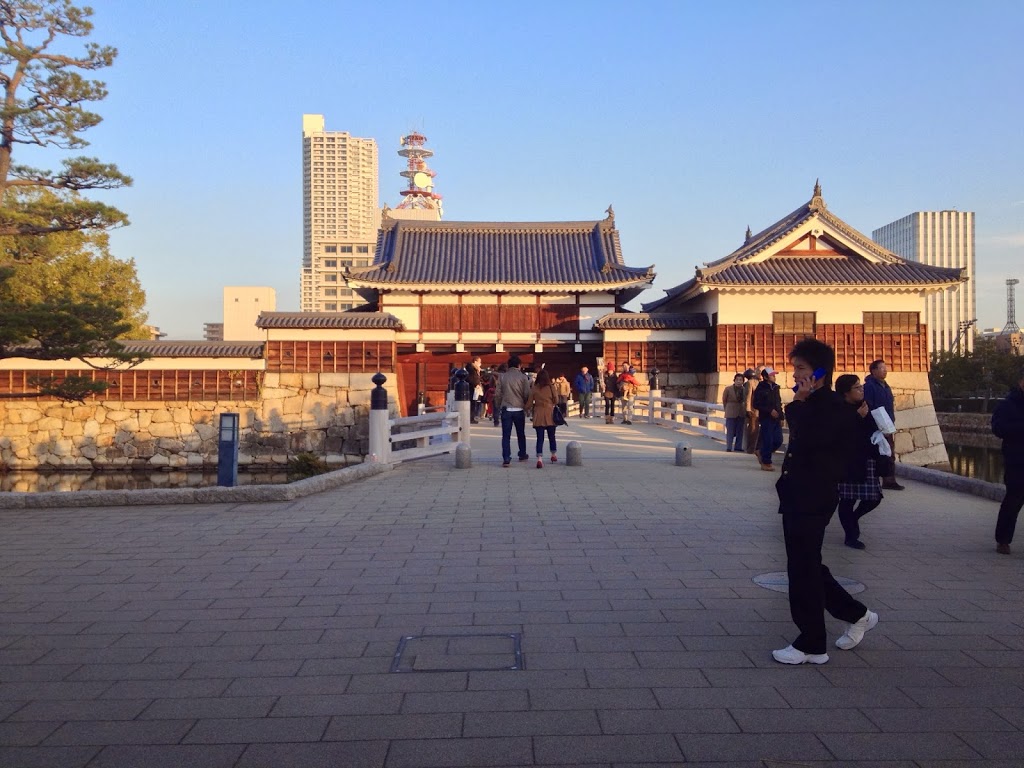
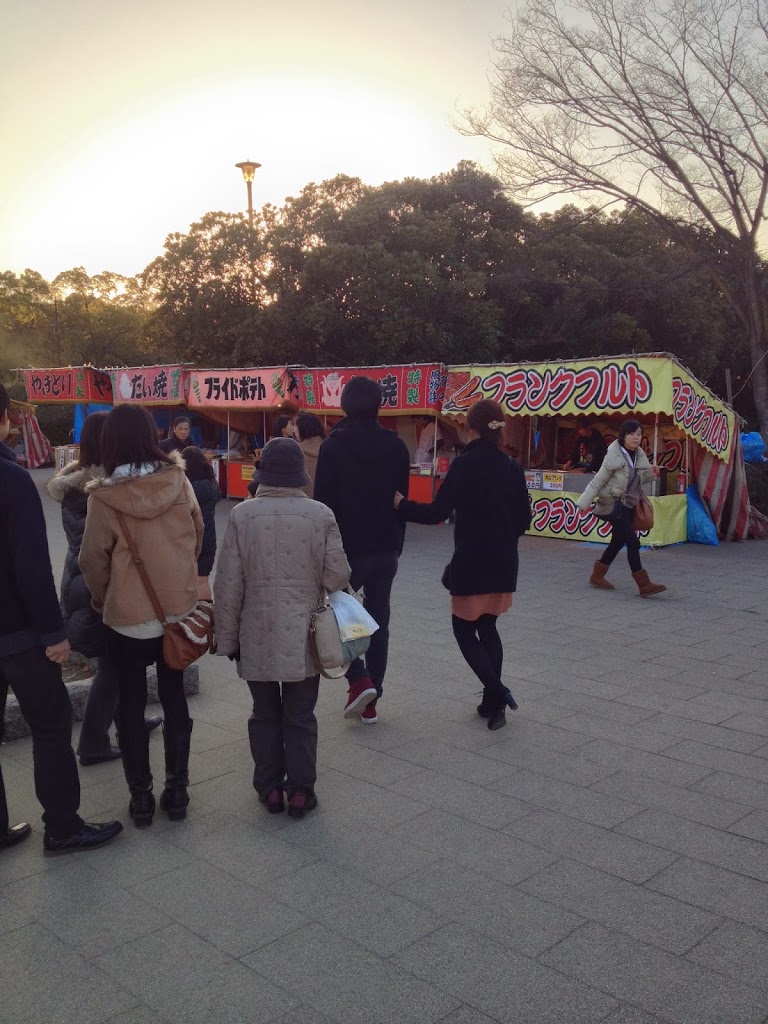
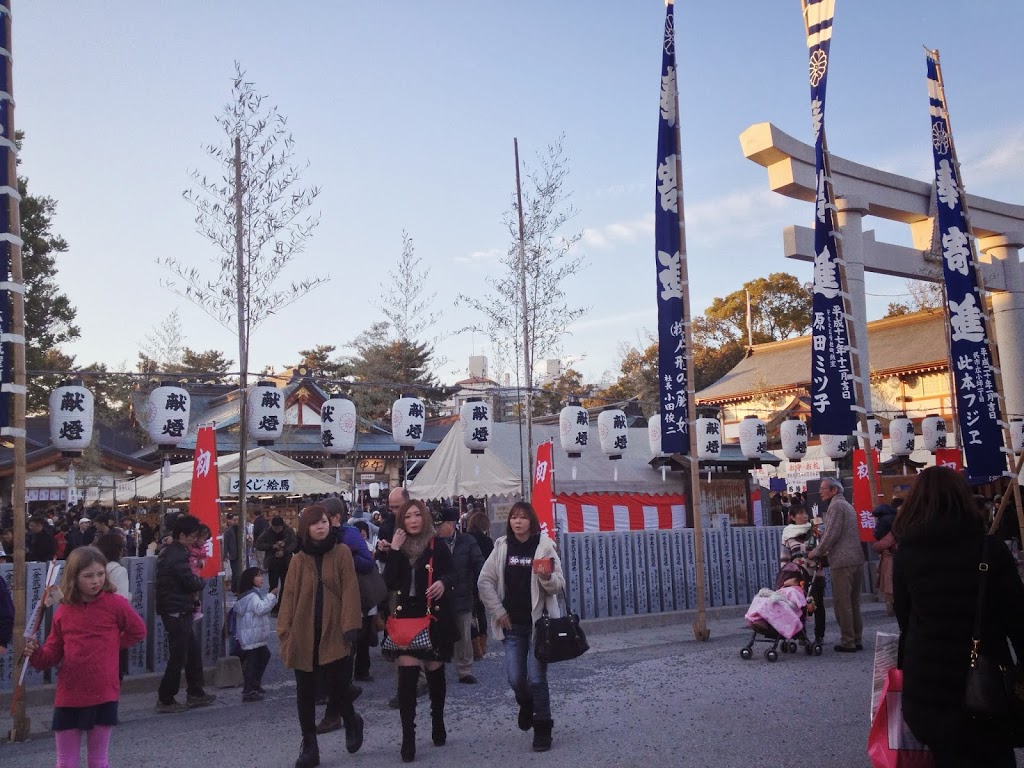
0 comments on “All Things Extraordinary” Add yours →